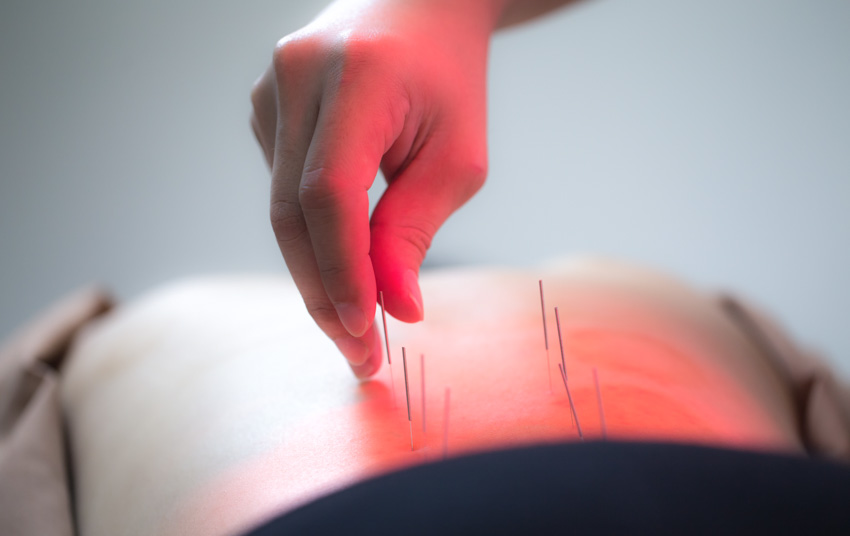
Acupuncture is effective for the treatment of kidney stones. In one investigation, acupuncture outperformed standard drug therapy for pain relief due to ureteral stones (kidney stones stuck in ureters). In another independent investigation, acupuncture combined with extracorporeal shock wave lithotripsy (ESWL) was more effective than using ESWL alone for removing kidney stones.
Acupuncture outperformed standard drug therapy for pain relief due to ureteral stones. Researchers at the Henan Wenxian County Hospital of Traditional Chinese Medicine investigated the effectiveness of acupuncture and standard drugs for pain relief due to ureteral stones. [1] The results find acupuncture more effective than standard drug therapy.
A total of 80 patients diagnosed with ureteral stones accompanied by pain symptoms participated in the study. Patients receiving acupuncture had a 95.0% total effective rate. Another group of patients receiving pain-relieving drug therapy had an 82.5% total effective rate. Both groups had effective relief, but the group receiving acupuncture significantly outperformed the group receiving standard drug therapy by 12.5%. The following primary acupoints were chosen for acupuncture treatment:
- SP6 (Sanyinjiao)
- SP9 (Yinlingquan)
- CV12 (Zhongwan)
- CV3 (Zhongji)
Additional points were selected based on pain locations. For lumbar pain, the following acupoints were added:
- BL22 (Sanjiaoshu)
- BL23 (Shenshu)
- BL28 (Pangguangshu)
- BL40 (Weizhong)
For abdominal pain, the following acupoints were added:
- ST24 (Huaroumen)
- ST25 (Tianshu)
- ST26 (Wailing)
- ST36 (Zusanli)
Upon disinfection, 0.35 mm acupuncture needles 40–70 mm long were perpendicularly inserted into the acupoints. After achieving a deqi sensation, the needles were rotated, lifted, and thrust rapidly for one minute. A 30-minute needle retention time was observed, and the acupuncture session was applied twice per day.
The embedding method was used when pain was not relieved after the acupuncture session. The acupoints Shenshu and Tianshu were applied with the embedding method with a 0.25 mm × 15 mm needle. First, the needle was inserted obliquely into a depth of 0.3 cun. Next, the needle was pressed with a soy-sized iodine cotton ball and secured with a 3 cm × 3 cm adhesive tape. The acupuncture and embedding treatment lasted for three days. After treatment, efficacy for each patient was categorized into 1 of 4 tiers:
- Recovery: Complete absence of radiating pain in the perineum. No percussion or tenderness in the kidney area or along the path of the ureter. No antispasmodic or analgesic drugs needed.
- Significantly effective: Relieved pain in the perineum. No percussion pain or tenderness in the kidney area or along the path of the ureter. No antispasmodic or analgesic drugs needed.
- Effective: Relieved pain in the perineum, with antispasmodic or analgesic drugs still needed.
- Not effective: No improvement of pain severity, with antispasmodic or analgesic drugs needed.
Acupuncture produced a 95.0% total effective rate compared with drug therapy at 82.5%. Follow-up investigations exploring sham acupuncture arms and combination arms with drugs plus acupuncture can help in determining the greatest results with the least adverse effects.
Sun et al. from Hubei Medical College Affiliated People’s Hospital investigated the effects of electroacupuncture and ESWL on the treatment of kidney stones. [2] They determined that the combination of electroacupuncture and ESWL is a more effective treatment protocol than using only ESWL. Among a total of 360 patients with kidney stones, electroacupuncture plus ESWL yielded a 92.8% total effective rate while using only ESWL yielded an 85.6% total effective rate. The results were confirmed by pain disappearance time, stone evacuation time, and B-scan ultrasonography results.
Two sets of acupuncture points were selected for the study. The first set was administered only during the treatment of ESWL, and included the following acupoints:
- SP6 (Sanyinjiao)
- BL57 (Chengshan)
- KD5 (Shuiquan)
Two days after treatment, a secondary set of acupuncture points was selected:
- BL23 (Shenshu)
- BL28 (Pangguangshu)
- CV3 (Zhongji)
- SP9 (Yinlingquan)
Additional points were added based on individual conditions. For blood in urine, the following acupoint was added:
- KD3 (Taixi)
For severe pain, the following acupoint was added:
- KD5 (Shuiquan)
For a weak physical constitution, the following acupoint was added:
- ST36 (Zusanli)
After insertion, needles at both sets of the acupoints were connected to a G6805-2 electroacupuncture device (2.5 mA, 10 V). A disperse-dense wave was applied with an intensity level set to patient tolerance levels or until muscle fasciculations were observable. The needles were retained for 15 minutes. The treatment for the second set of acupoints was conducted every two days. Seven days made one treatment course, and three treatment courses were completed in total.
Both studies reviewed in this article demonstrate that acupuncture is an effective therapy for the treatment of kidney stones. Acupuncture can relieve lower back or abdominal pain caused by ureteral stones. It can also increase the effectiveness of ESWL by shortening pain disappearance time and promoting kidney stone evacuation. Given the data, acupuncture is recommended as a viable treatment option by the research cited.
References:
[1] Jiao YK, Yan HX. (2012). Treatment of kidney stones by acupuncture in 40 cases. Henan Traditional Chinese Medicine. 32(02):221-222.
[2] Sun CL. (2014). Clinical observation of extracorporeal lithotripsy combined with acupuncture in the treatment of kidney stones. Modern Journal of Integrated Traditional Chinese and Western Medicine, 23(12):1329-1331.


